Using iron water for natural dyeing
Hi Creative Mamas! This is one of my favorite secrets within natural dyeing. Making my own iron water for natural dyeing has been a game changer for me since it has allowed me to create a variety of shades and tones from one single plant dye.
Iron is very commonly used as a mordant which means that you must apply to the fabric before its dyed. It’s also used as a modifier and this is the way I usually use iron myself, to modify the color after the fabric or yarn has been dyed.
Using iron water as a modifier
When you add iron water to a dye bath you will immediately see a change in color. You can transition pale and bright colors into darker ones. Golds and yellows can turn into greys and blacks, pinks can turn into purples. Its a fantastic way to expand your color palette and to discover nature’s amazing variety of greys.
Note that no natural dye will produce a grey color by itself.
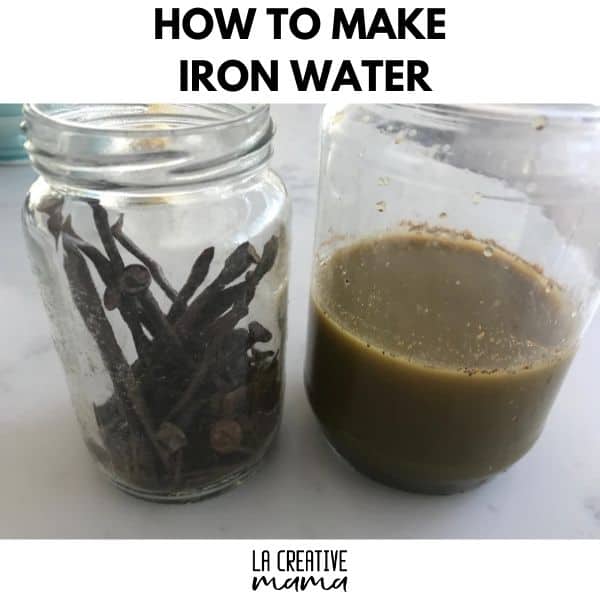
Iron water recipe
Materials:
- Rusty nails
- Sealable jar
- White vinegar, 1 cup
- Water, 2 cups
Download your FREE Iron Water Recipe by completing the form below and print it out for when you are ready to make it!
Step 1:
Place the small rusty nail objects inside a sealable jar. Pour water and white vinegar to cover the objects.
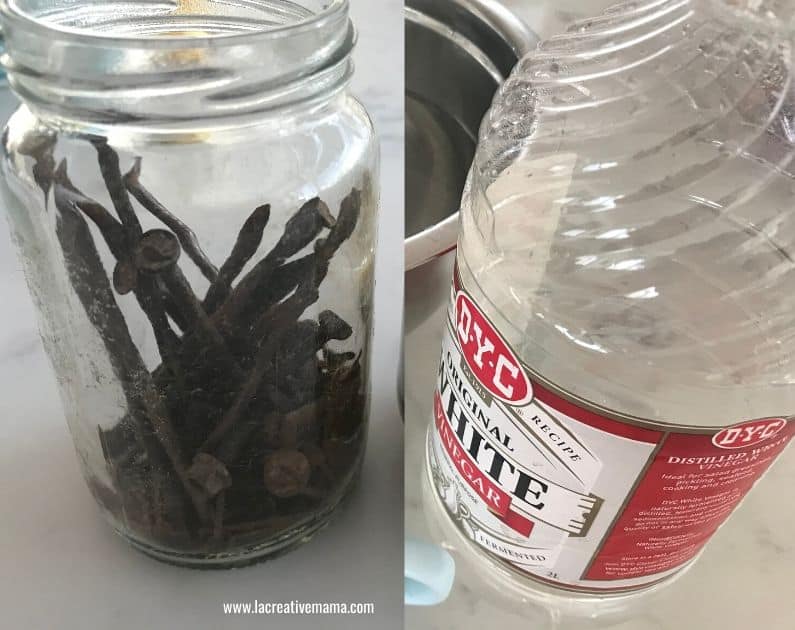
Step 2:
Cover the jar and leave for at least 3 weeks . You will notice that the liquid starts to bubble up and that’s ok. Leave the jar uncovered.
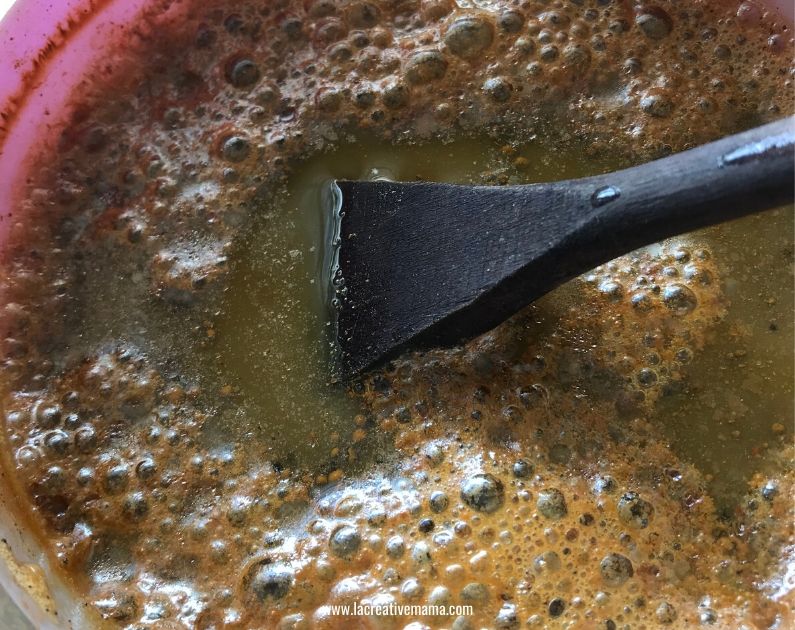
Step 3:
Before you use the iron water to modify the dye bath you need to strain it so that there are no rusty bits in it.
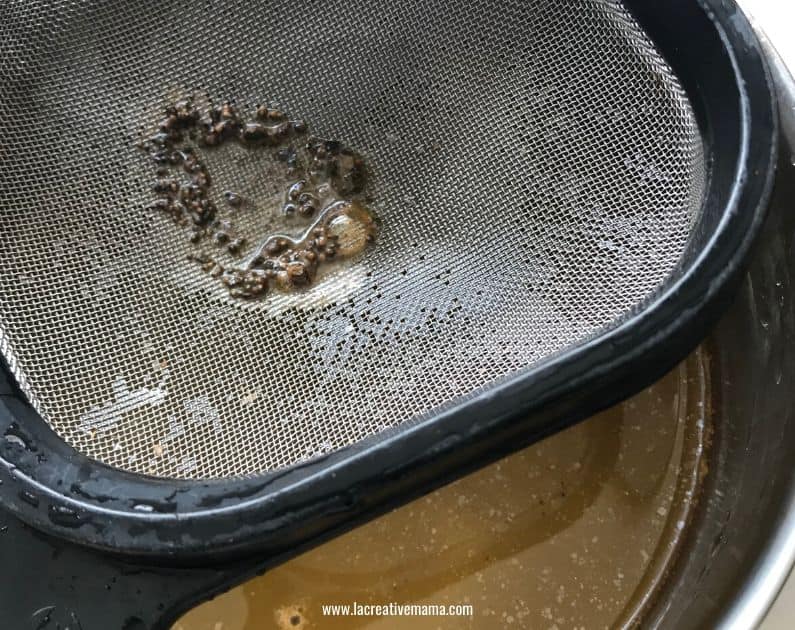
Step 4:
The resulting liquid will look like the one in the illustration below You can store by closing the jar lid. This iron water solution will keep for months and months. I always have one full jar in my natural dyeing studio for whenever I feel like modifying my colors.
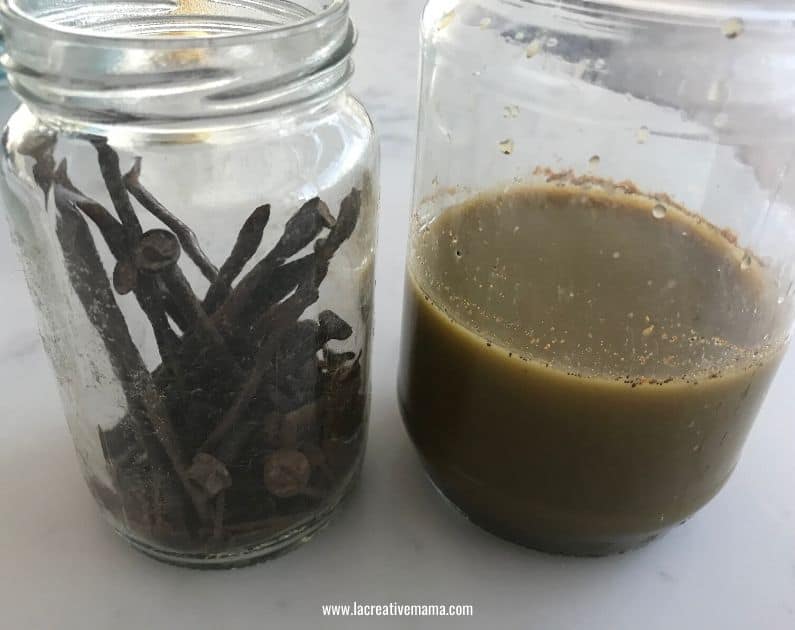
How to use iron water as a color modifier?
Now, the iron water is ready to modify the color. After you have dyed your fabric with your natural dye, allow the dye bath to cool to room temperature. Remove the fiber or yarn and pour the iron water by mixing a 1:1 ratio of the iron water and clear water.
Stir to make sure that the fiber is moving freely and that the modifier is reaching all areas of the fiber. Leave for fifteen minutes. The color should turn to a darker and duller tone. Remove from dye bath, rinse well and dry.
Note: The iron water is not a dye, it’s a modifier which means you must not leave it soaking or simmering for long periods of time to develop the color. The iron can be damaging to natural fibers so you must only exposed your fabrics and yarns for short periods of time.
Can iron water damage fabric and yarn?
Iron can be harsh, especially on protein fibers such as wool and silk. Leaving your fabric or yarn inside a pot of iron water will definitely damage your fibers. I recommend to use the iron water as a dye bath modifier rather than dipping the whole yarn or fabric inside the iron water.
This will avoid the fiber damage and you only need one cup of iron water inside the dye bath to modify the whole vat and achieve the desired change in color.
Important note: It’s very important to never use kitchen utensils for natural dyeing and the same goes when making iron water. Large quantities of iron are toxic when ingested. So always keep all dyeing equipment separate from cooking utensils.
How to use the iron water in natural dyeing?
Here are some examples of how using iron as a modifier can really expand your color palette. The following swatches are the results of a fun afternoon of playing around with natural dyeing and experimenting with expanding my color palette.
The natural dyeing literature describes the colors which are modified with iron as dull and sad. I disagree. I believe all colors obtained through natural dyeing are amazing and it always surprises me how quickly a color can be modified by using a little bit of iron 🙂
Using iron water for natural dyeing with cochineal
All the examples below have been dyed using the natural dyeing processes described here.
In this example I dyed wool yarn using a very intense cochineal dye bath (yarn on the left). I used cochineal at 300% weight of fabric (WOF). I then removed the yarn from the dye bath and modified the dye bath with the iron water. The result is the yarn on the right and the color changed to a much lighter and duller tone of pink.

Using iron water for natural dyeing with madder
In this example I dyed wool yarn using madder 100 % weight of fabric (WOF). I modified it in the same way as described in the above example using iron water. As with cochineal the resulting color is duller and a different tone of brick red.
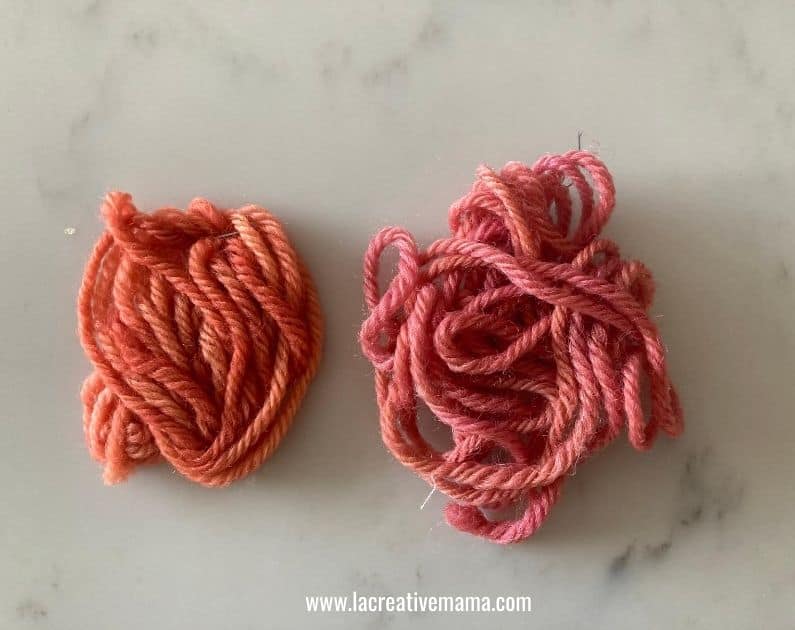
Using iron water for natural dyeing with eucalyptus
In this case I dyed silk using Eucalyptus to 100% weight of fabric. After a quick dip in the dye bath modified with iron water the silk turned grey. Amazing!
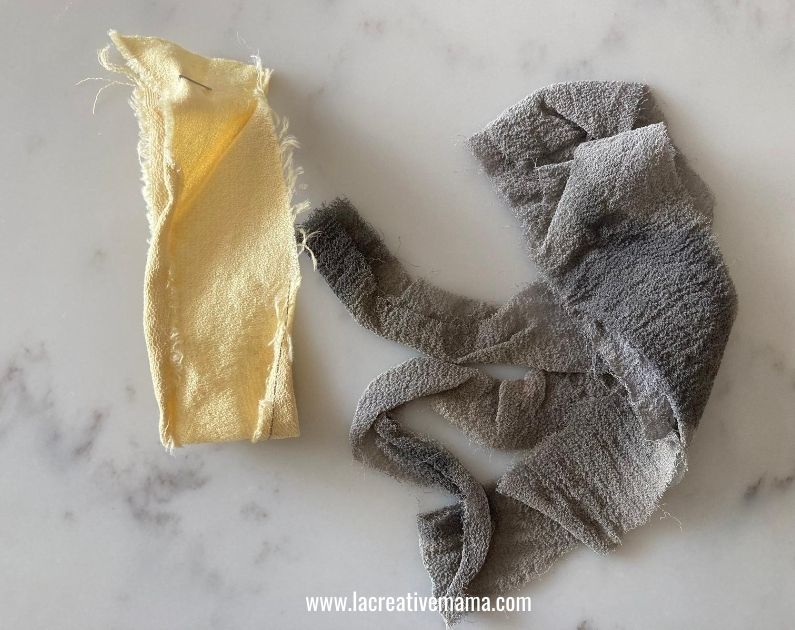
Using iron water for natural dyeing with acorns
In this example I dyed different kinds of silk using acorns to 300% weight of fabric (WOF). After modifying the dye bath with iron water and leaving the silk for a few minutes the resulting color is black! It could have been grey had I left it less time.

Using iron water for natural dyeing with onion skins
For this example I dyed wool yarn and silk samples using onion skins. I modified the dye bath with iron and it changed the tone to a darker shade of gold. The fiber on the left is before the modifier and the fiber on the right is the result of the fiber after dipping it in the modified dye bath.
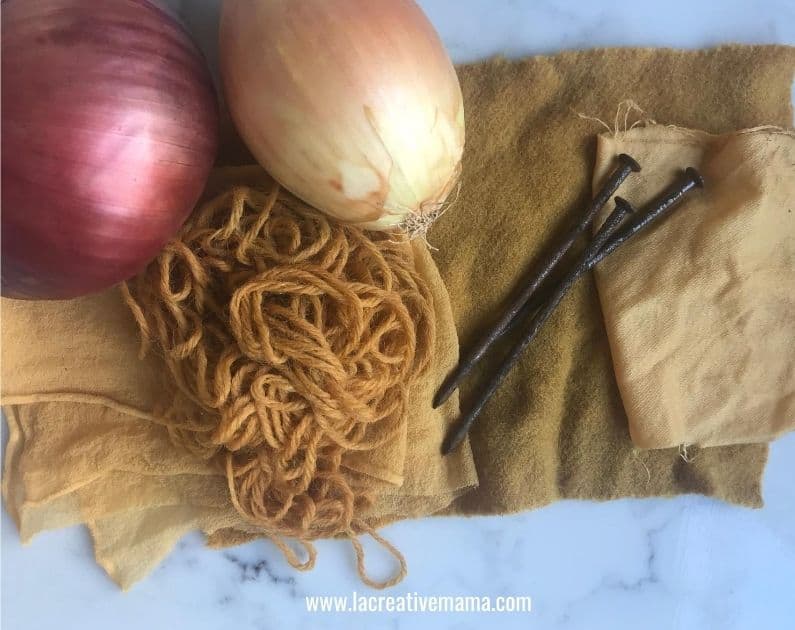
Are you ready to start having fun with creating your own shades of color? It’s so much fun!
Download your FREE Iron Water Recipe by completing the form below and print it out for when you are ready to make it!
Check out these amazing natural dyeing tutorials using iron water:
How to make natural black dye with acorns
How to dye beautiful pinks with Avocado dyes
How to dye fabric with onion skins
Fabric Printing With Natural Dyes
Natural Bundle Dyeing, make your own DIY scarf


When making your own iron water use steel wool instead of nails.
You get a lot more surface area and faster results.
Also the warmer you keep the solution the faster it will work as every 10° C rise in temperature will double the rate of reaction.
Hey Teddy! Thanks for the tip, what a great shortcut!!!!!
Hey Victoria,
Should I leave the jar coverd or uncoverd when there are bubbles?
thanks for your great blog!
I usually cover mine to prevent water from evaporating. But I don’t use the screw on lid, I use a regular dinner plate, porcelain/ceramic, big enough to fit the top of the jar inside the bottom rim. That way it’s quite tightly sealed, yet gases can escape.